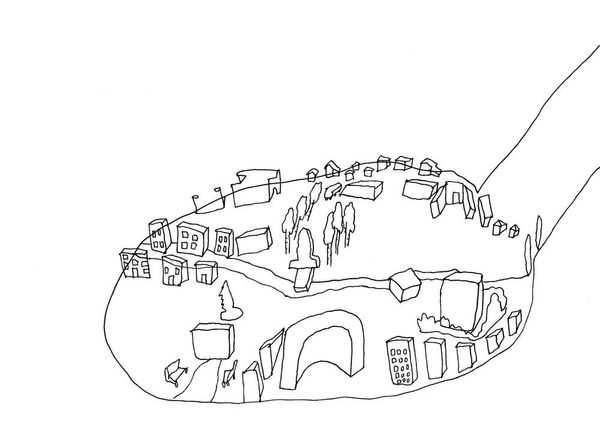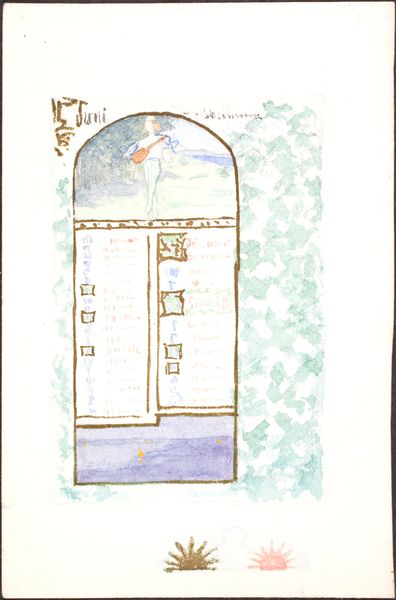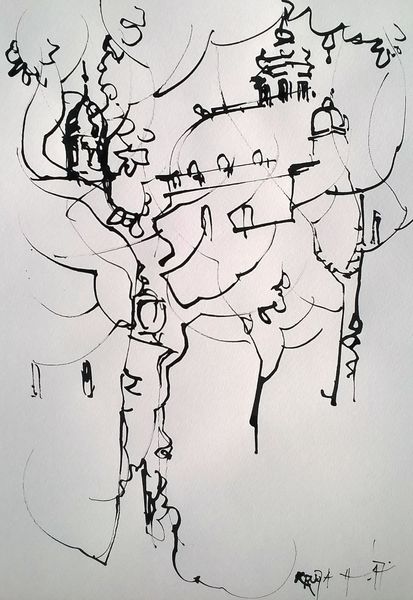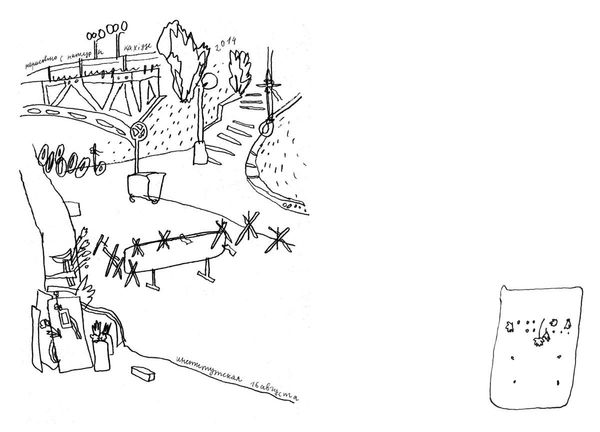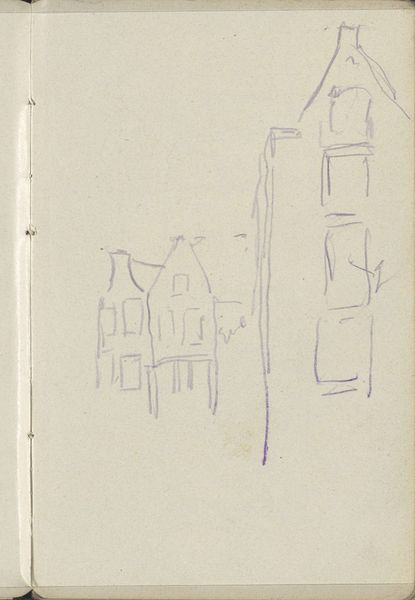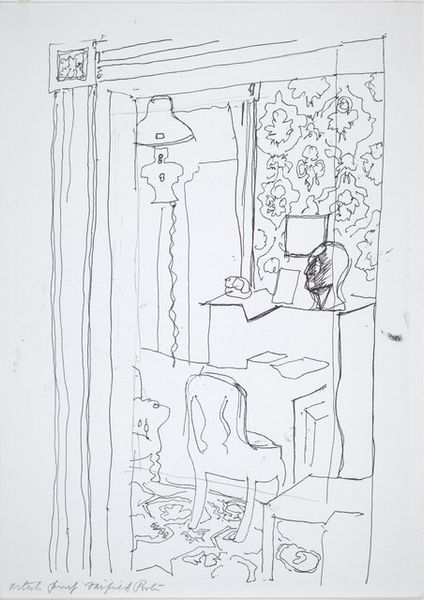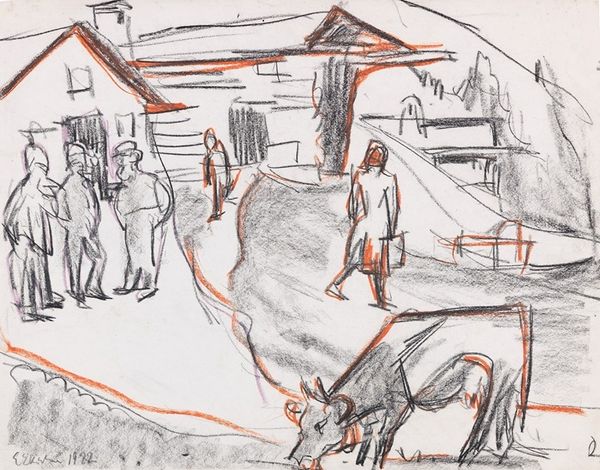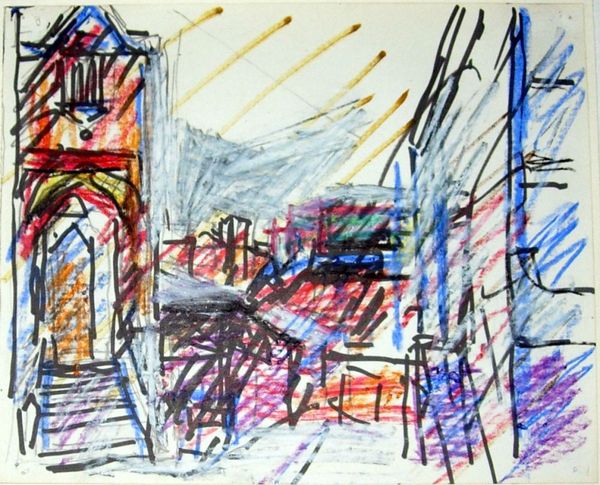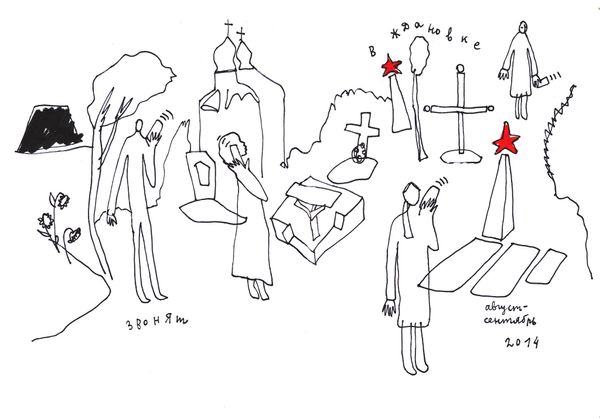
drawing, paper, ink
#
drawing
#
contemporary
#
narrative-art
#
figuration
#
paper
#
ink line art
#
ink
#
cityscape
Copyright: Alevtyna Kakhidze,Fair Use
Curator: Here we have Alevtyna Kakhidze’s 2017 ink drawing, titled “Untitled. Strawberry Andreevna.” The work, created on paper, presents a cityscape composed of linear elements. What are your initial thoughts? Editor: A cityscape indeed. My first thought is this feels like a half-remembered dreamscape or perhaps a hastily scribbled itinerary. There's a simplicity, almost a childlike quality to the lines, but the content hints at something much weightier than a child's drawing. Curator: It does bear resemblance to children’s art, particularly in its symbolic reduction of forms—cars as stacked rectangles, buildings as simple outlines—a recurring technique in narrative art to suggest memory or simplified reality. Look at how the cars morph into elongated shapes. Do you find significance there? Editor: The elongation gives them a sense of hurriedness, maybe anxiety? There's a crowd near what look like doorways at the bottom. Is this a checkpoint, perhaps? There's a distinct sense of transition, of movement…or attempted movement. This could signify migration. I feel a bit of apprehension looking at that crowd scene. Curator: The use of repeating architectural forms, the checkpoints or borders as you suggest, speaks to the increasing bureaucratization and fragmentation of modern life, reminiscent of themes explored in 20th-century absurdist drama. The strawberry reference is especially poignant here. Do strawberries themselves evoke displacement? Editor: Strawberries often speak of home and childhood – that fleeting sweetness. Juxtaposing that with images of checkpoints and borders…It is really evocative, hinting at lost comforts. It also seems there are some words in the local language in-scripted over the scene as a collage - I find this artistic choice fascinating, as it gives the sensation of the place it refers to. Curator: Yes, Kakhidze's inclusion of text embeds this "Untitled" piece within a particular context, allowing those fluent in the language a richer experience. It adds layers of sociopolitical commentary absent from simpler depictions of movement and barriers. Editor: It does. Thinking about the personal associations someone from that culture might have when looking at those words transforms the artwork, doesn’t it? Suddenly, what seemed like a child's innocent rendering feels laden with complex meaning. Well, I will walk away thinking what is real, a line in a document, or an evanescent dream? Curator: A valuable reflection indeed. I appreciate your fresh and intuitive way of responding to these interwoven cultural symbols in Kakhidze’s striking visual narrative.
Comments
No comments
Be the first to comment and join the conversation on the ultimate creative platform.
